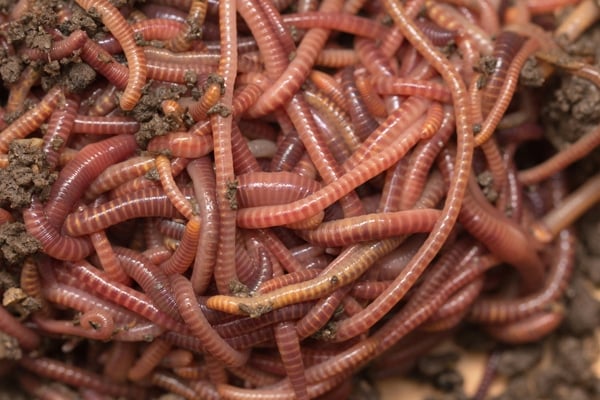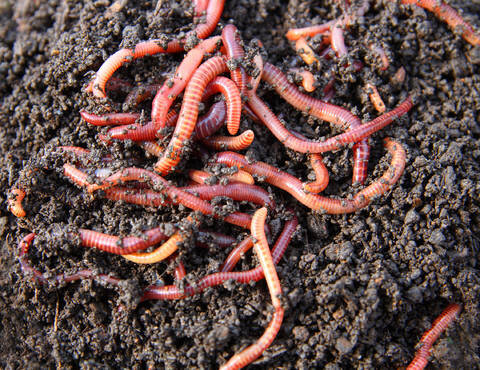Red worms: How to raise a worm bin
Red worms: How to raise a worm bin
Blog Article
Using Red Wigglers for Efficient Organic Garbage Disposal
The usage of red wigglers for natural garbage disposal offers a compelling technique to handling food scraps while promoting environmental sustainability. These worms not just boost waste decay but additionally produce important worm spreadings, which can considerably improve dirt wellness. Their ability to process big quantities of organic material with marginal effort positions them as an accessible solution for homes and neighborhoods alike. Comprehending the nuances of establishing up a successful worm bin and preserving an ideal habitat is vital for optimizing their benefits. The next action in this procedure might amaze you.
Benefits of Making Use Of Red Wigglers
Among one of the most engaging benefits of utilizing red wigglers for natural waste disposal is their impressive efficiency in composting. These worms, medically called Eisenia fetida, are especially adjusted for breaking down natural materials, enabling them to process waste as much as twice their body weight every day. This rapid decay not only increases the composting process but also generates nutrient-rich worm castings that considerably enhance soil quality.
Furthermore, red wigglers add to a decrease in land fill waste. By diverting organic products from garbage dumps, they aid reduce methane discharges-- a powerful greenhouse gas. This ecological benefit is critical in the fight versus environment change.
Additionally, red wigglers are low-maintenance and can grow in different environments, making them available for both novice and seasoned composters. Their capability to duplicate swiftly ensures a consistent populace, facilitating ongoing waste handling.
Setting Up Your Worm Container
Creating a reliable worm bin is essential for making best use of the advantages of composting with red wigglers. Make certain the bin has ample drainage openings to prevent excess moisture, as red wigglers thrive in a damp but not soaked environment.
(redworms for composting)Next, prepare the bed linen material, which serves as the worms' habitat and food source. The container must be placed in a dark, temperature-controlled location, preferably between 55 ° F and 77 ° F, to maintain worm task.
Once the bin is set up, present the red wigglers, enabling them to accustom to their brand-new atmosphere. It's crucial to monitor dampness levels and temperature level frequently. A well-kept container will not only support the health of the worms but additionally help with efficient decay of natural waste. By adhering to these guidelines, you can create a growing ecological community that adds to lasting waste administration.
(purchase red worms)
What to Feed Red Wigglers
An understanding of the suitable diet plan for red wigglers is crucial for keeping a healthy and balanced worm populace and optimizing composting performance. These items not only supply necessary nutrients however additionally add to the wetness balance within the worm container.
It is critical to avoid certain foods that can hurt the worm population. Red wigglers need to not be fed meat, dairy products, oily foods, or processed things, as these can draw in parasites and produce unpleasant odors. red wigglers. Additionally, citrus fruits and zesty foods need to be lessened, as their acidity can be harmful to worms
To promote optimum digestion, food should be cut into smaller sized pieces, assisting in quicker breakdown and consumption. Introducing food in small amounts is also essential; overfeeding can result in anaerobic problems and bring in undesirable bugs. Checking the worm bin for food usage prices will certainly aid make sure that red wigglers are obtaining a sufficient diet while preserving an effective composting environment. Correct feeding techniques are vital for fostering a flourishing ecological community within the worm bin.
Preserving Your Worm Environment
A well-kept worm environment is crucial for the wellness and performance of red wigglers. To ensure optimal conditions, it is critical to keep track of temperature level, dampness, and oygenation within the worm container (red wigglers).
An excellent guideline of thumb is to preserve dampness at roughly 70% to 80%. If the bed linen ends up being too damp, it can lead to anaerobic conditions that are dangerous to the worms.

Utilizing Worm Castings in Horticulture
Rich in nutrients and useful microbes, worm castings act as an exceptional natural plant food for gardening. Produced with the gastrointestinal procedures of red wigglers, these castings include an array of essential nutrients, including nitrogen, phosphorus, and potassium, which promote robust plant development. Unlike read review synthetic fertilizers, worm castings supply a slow-release device, making certain that nutrients are offered to plants over an extensive duration, thus lowering the danger of nutrient leaching and soil exhaustion.
Along with vitamins and mineral material, worm spreadings boost soil structure and aeration, enhancing moisture retention and drainage. The microbial life existing in worm spreadings assists to suppress microorganisms and advertises a healthy dirt ecosystem, more benefiting plant wellness. When integrated right into the dirt or made use of as a top dressing, worm castings can substantially enhance seed germination prices, root growth, and overall plant vitality.
For optimum results, gardeners need to use worm castings at a rate of 1-2 inches per square foot, blending them right into the soil or including them right into potting mixes. Overall, using worm castings is an eco-friendly technique to enhancing dirt fertility and guaranteeing prospering garden atmospheres.
Final Thought

Report this page